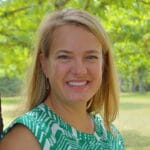Find an office location
More than 175 offices from coast to coast.
Documentation is essential to keep historical resources from becoming forgotten memories. Historical surveys are a staple for Terracon’s Jacksonville Historical Preservation team, which has performed hundreds of them over the years.
Well-known examples of such resources include the Washington Monument, the Golden Gate Bridge, or Castillo de San Marcos. More commonplace examples are homes built prior to 1970. The National Historic Preservation Act of 1966 requires local governments to maintain, track, and preserve their historical resources. Historical surveys are standard and are performed to identify, record, and evaluate resources within cities, towns, or counties.
What is a Historical Resource?
According to the National Park Service’s guidelines for historical preservation, historical resources include any building, structure, object, site, road, railway, marker, or monument 50 years old or older.
A 2019 survey request from the City of Sarasota, Florida, was anything but typical. In fact, it was unprecedented in the Sunshine State. Sarasota requested a historical survey of the entire city – more than 10,000 historical resources – to be completed in 12 months. Meeting the challenge required innovation, technology, dedication, and teamwork. (All work performed for this project was executed under Environmental Services Inc., A Terracon Company, following its acquisition in 2019.)
The first step in streamlining the survey process was eliminating the use of paper from collection in the field. The team used ArcGIS Collector, a programmable application that uses spatial data and GPS, to accurately record the location of resources.
Our in-house GIS team customized the app so field data was easily transferable to the Florida Master Site File form, the state’s official repository for data collected on historical and cultural resources. This efficient and simplified workflow allowed the survey team to catalog up to 75-100 resources per day, which was critical to completing the project on schedule.
A detailed plan was crucial to logging every available historical asset. The team divided Sarasota into sections, or ‘pods,’ containing 50-200 structures each, using the existing road system and other geographic boundaries such as the shoreline, creeks, or canals. A total of 90 pods were generated for the survey. This categorized approach aided in documentation of every available historical resource.
By the time the project was completed, Terracon’s historic preservation team identified 11,079 resources in Sarasota; 7,221 of which were not previously recorded. In addition, seven new areas of the city were recommended for National Register Historic District designation as a result of the survey.
The team’s work on the project helped the City’s Historic Preservation Board earn the 2020 Best Practices Award in Identification/Registration from the National Alliance of Preservation Commissions. The project also laid the groundwork for future historic preservation planning initiatives, as well as the promotion of Sarasota’s history for years to come.
Cultural resource assessment and historic restoration and preservation are wide-ranging specialties that present unique challenges. Our team has the expertise and resources to protect and preserve the natural and built environment.

More than 175 offices from coast to coast.